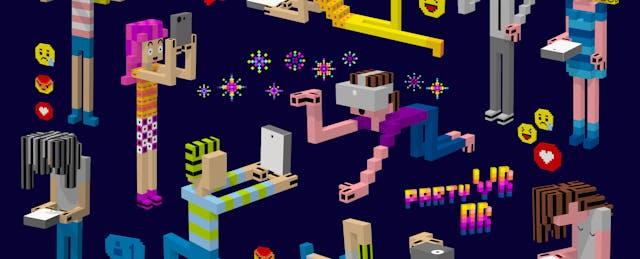Virtual reality has been the driving force behind Google’s Expeditions app since it launched three years ago. And recently it’s added another layer of “reality” to the virtual field trip tool—AR, or augmented reality to be precise, which take the form of features such as narration, annotations, and a new “solo mode,” going on virtual trips without a guide.
This past school year Google says over one million students have used the AR tools as part of the company’s Expeditions Pioneer Program. In New York City, 99 different schools experimented with the program for the first time, giving students an up-close look at everything from famous world landmarks to the human body.
Getting AR into NYC schools is not about entertainment, says Media and Entertainment Commissioner Julie Menin, who works for the city. Her office partnered with Google and the NYC Department of Education to expose students to augmented and virtual reality in order to prepare them for the future workforce—where she says several AR and VR positions will be opening up.
“One of the most interesting things we are seeing from a trend standpoint is there are really six New York City anchor industries that are utilizing VR and AR: healthcare, education, real estate, retail, live entertainment and video entertainment,” explains Menin. “So making sure young people have been exposed to this type of technology, that they have a knowledge of how the technology works, is very important.”
Menin says she knows jobs in the field are opening up because of large investments nationally and locally in AR and VR tools. Last summer, together with the New York City Economic Development Corporation, Menin’s office worked to create a publicly funded VR and AR hub, offering a $6 million investment into a space located in Brooklyn’s Tech Triangle that will be operated by NYU Tandon. The new lab will support ventures within the workspace, provide early-stage capital to entrepreneurs, host convenings for investors, researchers and leaders in the AR/VR industry.
“It is really important that as a city we are positioning ourselves to be the VR/AR capital of the world, and that we are exposing our young students to this as well,” Menin exclaims.
Partnering with Google
For the staff at Google, NYC schools’ desire to adopt AR tools into their classroom appears to be a win-win for the company. The schools in the Pioneer Program received devices, teacher training, and support staff to help teachers implement their software. Meanwhile, Google grows its footprint in the district—building brand recognition and possible future users.
Jennifer Holland, program manager at Google for Education, also notes that the company is learning a lot about what teachers need and want through their partnerships with public school districts.
“Google Expeditions AR was built for the classroom, with the needs of educators and students in mind. However, as with any new technology, there can be a reluctance to use it as teachers have so much on their plates,” explains Holland. “What we found was that once teachers used the app with their students, they could see how transformational the experience could be; it really brought abstract concepts to life in a more enriching way.”
To Holland, abstract concepts could mean anything from the human muscular system to the world of ancient Rome, African animals, the Periodic Table, earthquakes and Da Vinci’s Inventions. Through the app’s new “augmented reality tours,” students can use their smartphones or tablets to project 3D objects into whatever space they are in.
Students can then examine the objects by touching the device screen, moving it around and making an object, seemingly from another world, appear as if it is right in the classroom. This type of interaction is something Menin notes is only a taste of what AR/VR can really do, and she envisions students exploring these concepts deeper as they get older.
“If we expose students in the middle school years and they are interested and inspired by it, then they can continue it in high school and eventually think about having careers in VR and AR,” says Menin. “That is the nexus and something that is incredibly exciting to us.”


